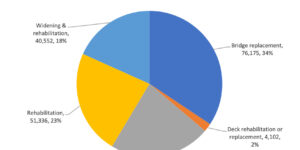The Atlantic Ocean may have one of its quietest hurricane seasons in decades because of cooler water in the Atlantic and an El Nino in the Pacific, Colorado State University forecasters said.
William Gray and Phil Klotzbach predict seven named storms in the basin versus the 30-year average of 12. Three of them may reach hurricane strength with winds of 74 miles per hour and one may become a major system with 111 mph winds. A storm gets a name when its winds reach 39 mph.
“Coastal residents are reminded that it only takes one hurricane making landfall to make it an active season for them, and the need to prepare the same for every season,” Gray and Klotzbach wrote in the report. Hurricanes and tropical storms were the costliest and most deadly U.S. natural disasters from 2005 to 2014.
The last time only seven storms were named was 1997 and that year included an unnamed subtropical storm, according to the National Hurricane Center. Based on the amount of energy unleashed by the storms, Klotzbach wrote, this year should have about 45 percent of normal. In addition, the total number of days storms are active in the Atlantic will probably be about 30 versus a median of 60.1.
The Gulf of Mexico coast and Florida, which are most susceptible to the storms, are home to major U.S. energy and agriculture operations. About 4 percent of U.S. natural gas and 17 percent of oil production is centered in the Gulf. In addition, 45 percent of U.S. petroleum refining and 51 percent of natural gas processing capacity is along the coast. Florida is the second-largest producer of orange juice behind Brazil.
In 2005, the Gulf accounted for 16.5 percent of gas production. Even with the diminished importance, a quiet hurricane season could mean lower prices, said Stephen Schork, president of the Schork Group Inc., a consulting group in Villanova, Pennsylvania.
“A stable hurricane season bodes well for lower prices,” Schork said by telephone.
–With assistance from Naureen S. Malik and Christine Buurma in New York.




















 More Than Half of All Employees in Finance, Insurance Work Remotely: Triple-I
More Than Half of All Employees in Finance, Insurance Work Remotely: Triple-I  Commercial Lines Profit Growth: Execution Matters More Than Portfolio Mix
Commercial Lines Profit Growth: Execution Matters More Than Portfolio Mix  Allstate Insurers Sue Hyundai, Kia to Pay for Claims From Defective Cars
Allstate Insurers Sue Hyundai, Kia to Pay for Claims From Defective Cars  New York Judge Rejects Climate Concerns in Effort to Shutter Bitcoin Mine
New York Judge Rejects Climate Concerns in Effort to Shutter Bitcoin Mine 






